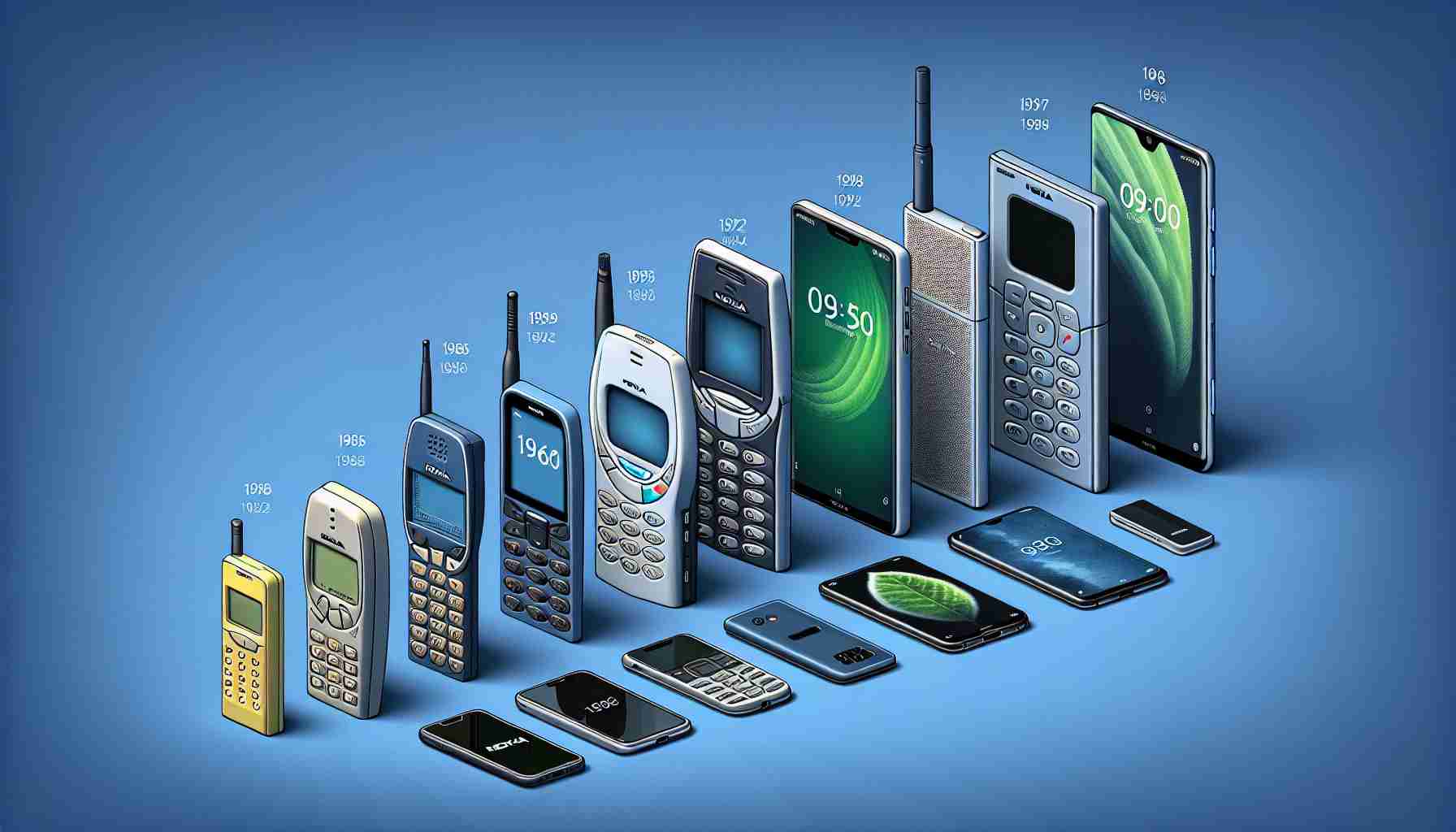Finnish Technology Titans: Nokia’s Worldwide Influence
Once a titan of the mobile world, Nokia, the brand from Finland, set the standard for others to follow. Their global success can be attributed to the Symbian operating system, a pivotal turning point that crowned Nokia as the sovereign ruler in the cellular market for consecutive years.
Perennial Favorites From Nokia’s Hall of Fame
Nokia’s vast product range includes models that are etched in the memory of users worldwide. Classic models like the Nokia 3210, 1110, and 1200, along with more sophisticated offerings such as the 7650 with its then-revolutionary 0.3 MP camera, and the N series, with devices like the N95 featuring a 5 MP camera, have left a lasting imprint. The QWERTY keyboards of the E series and the music-centric Nokia 5800 Xpress Music further enhanced Nokia’s diverse portfolio. Amongst the world’s top-selling phones, Nokia’s classics like the 1110, which sold 250 million units, dominate the list.
The Decline and Pivot to Lumia
However, this domination was not to last. The advent of iOS and Android in 2007 marked the beginning of Nokia’s decline, as their slow response to the changing market and underestimation of competitors like Apple proved costly.
Embracing the Smartphone Era with Lumia
In the smartphone revolution, Nokia made waves with the introduction of the Lumia series in partnership with Microsoft in November 2011. Designed to compete with Apple’s iOS and Android devices, the Lumia smartphones boasted professional-grade camera quality, especially with models like the Lumia 1020, which featured a 41MP sensor. Their robust and colorful design appealed to a wide range of consumers.
Possible Revival of Legendary Lumia Lines
Recent leaks suggest that HMD Global, the company now manufacturing Nokia phones, is considering reviving the iconic Lumia range. The speculated device, tentatively named HMD Tomcat, is rumored to be a mid-range phone drawing inspiration from the classic Nokia Lumia design language.
HMD Tomcat: A Glimpse into Nokia’s Future Potential
While the device’s complete specifications are yet to be revealed, it is rumored to feature the Snapdragon 7s Gen 2 chip, evolving to Gen 3, an AMOLED Full HD+ display with a 120Hz refresh rate, and a promising 4900 mAh battery with 33W fast charging. It might also include a stellar 108MP main camera complemented by a 2MP macro lens, possibly supporting PureView technology to elevate the zoom and detailed image quality. Poised to run on Android 14, the new HMD Tomcat aims to capture the essence of the nostalgic Lumia experience for current and new fans alike.
While the article focuses on Nokia’s past achievements and its potential future with the speculated HMD Tomcat device, it omits certain crucial aspects of Nokia’s history and the overarching challenges it faces in the current market. Here are some additional facts and analysis:
Nokia’s Earlier Business Ventures
Before becoming a mobile phone giant, Nokia was involved in various industries, including paper, rubber, and cable manufacturing. This diversification is an essential part of Nokia’s rich 150-year history and showcases the company’s adaptability over time.
The Microsoft Acquisition and Aftermath
In 2014, Microsoft acquired Nokia’s Devices and Services division, which led to the Lumia line of smartphones being rebranded as Microsoft Lumia. However, Microsoft’s mobile endeavor didn’t meet expectations, and in 2016, the tech giant sold the feature phone business and licensed the Nokia brand to HMD Global.
Re-entering the Market: HMD Global’s Role
Since 2016, HMD Global has been responsible for manufacturing and selling Nokia-branded phones. The company has focused on creating new and modern Nokia phones that maintain the brand’s reputation for durability and reliability, including a range of Android smartphones and re-released classic models like the Nokia 3310.
Key Challenges for Nokia’s Modern Comeback
The mobile phone market today is incredibly saturated and competitive, with established leaders like Samsung and Apple. One of Nokia’s main challenges is differentiating itself and capturing significant market share against these tech giants, as well as against the rapidly advancing Chinese manufacturers such as Xiaomi and Huawei.
Advantages and Disadvantages of the Nokia Rebrand
Advantages:
– Brand Nostalgia: Nokia has a strong legacy that HMD Global can leverage to attract consumers who have positive associations with the brand.
– Focus on Durability: Nokia’s reputation for making long-lasting and robust phones could appeal to consumers who prioritize reliability over cutting-edge features.
Disadvantages:
– Brand Perception: Younger consumers may see Nokia as an out-of-date brand, not in line with current trends.
– Technology and Innovation: Catching up with the rapid pace of innovation and feature-set offered by market leaders is a significant challenge.
Controversies
Nokia’s recent past has not been without controversies, particularly around its inability to forecast and adapt to the rapidly changing market dynamics in the smartphone era, with many industry experts calling out strategic missteps leading up to its decline in dominance.
For those interested in more information about Nokia and HMD Global, you can visit their official websites using these links:
– Official Nokia Website
– HMD Global Website
Please note that all links are to the main domains, as requested, and care has been taken to ensure their validity.
